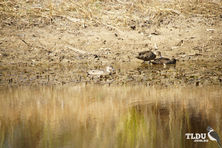
Shoppers Feedback:
Jan 17, 2017
Hello Ros,
I have now paid the invoice, but I would like to write to you just to say a big THANK YOU for getting me the Penguin!
The ChatterMate Penguin became a nice memory for me when I was in New Zealand, and I am so greatful to you for arranging so that I could have it! :-)
Thank you so much!!!!!!!!!!!
Regards,
Malin
Hi Ros,
Many thanks for your very kind email. I really appreciate your prompt reply!
I appreciate your advice regarding the decorations and customs. These are a gift for my daughter’s exchange student family so when she returns home on the weekend I will show her and see if she loves them as much as I do!
Thanks so very much again - I am truly grateful for your kind assistance.
Kind Regards
Bernadette
Ros,
Thanks again for the great customer service. It's a refreshing change!
Best regards,
Trevor
Hey Roz,
Thank you for your emails. Just loved my first order. The cute little Aussie bush critters are going to be used for an office Christmas decoration. My colleagues also liked them and talked about making an order to your site. I'll send you a photo when completed.
I'll be ordering more to send to my daughter's host family in America.
Fabulous service from you.
Kind regards,
Michelle
Thankyou. Order arrived today. One very happy grandson with his new beastly binoculars.
Regards,
Irene
- Home
- Wild Wonders
- Shop
- Aromas of Australia
- Australian Made
- Books
- Book Marks
- Christmas Decoration Sale
- Christmas Decorations
- Clocks
- Drink Holders
- Garden & Outdoor
- Gift Wrapping & Cards
- Home & Giftware
- Jewellery
- Keyrings
- New Products
- Pencils & Pen Holders
- Photo Frames
- Plush Toys
- Plush with Sound
- Sheepskin Rugs
- Stationery
- Stone Carvings
- Toys & Games
- Travel Goods
- Wedding
- Wild Figurines
- Wildlife Safety Products
- Wind Chimes
- Wine Charms
- View All Products
- Wildlife
- Australiana
- Explore
- Contact Us
Grey Teal

Quick Facts
| Length: | 44 cm |
| Height: | - |
| Weight: | - |
| Colour: | - |
| Habitat: | Prefer timbered pools and inland river systems, but can be found in sheltered water areas - these include fresh, brackish and salt water. |
| Food: | Variety of dry land plants, aquatic plants, seeds, crustaceans, insects and their larvae |
| Predators: | - |
| Status: | Secure in all states and territories |
The Grey Teal is almost all grey-brown. Each feather of the body is edged with buff, except on the rump. The chin and throat are white, the bill is dark green and the eye is red. The secondary wing feathers have glossy blue-black patch, broadly bordered and tipped with white. In flight, a large white wedge is visible on the underwing. The Grey Teal is one of the smaller Australian ducks (males are larger than females). Both sexes are similar in plumage.
The Grey Teal is sometimes confused with the female Chestnut Teal. The Chestnut Teal has the chin and throat pale brown, instead of white. The male Chestnut Teal is quite different in plumage, being mostly chestnut below, dark brown above and with a glossed green head and neck. The two species overlap in range and often mix together where they meet.
Grey Teals are found throughout Australia
Grey Teals are common in all sheltered watered areas. These include fresh, brackish and salt water, and the birds can be found on the smallest area of water in the driest of areas. The most favoured habitat type is timbered pools and river systems of the inland areas, where these birds can be found in quite large numbers.
During periods of drought, Grey Teal are very mobile in search of water, often travelling great distances.
Grey Teals feed in small to large flocks. Food consists of a variety of types and includes dry land plants, aquatic plants, seeds, crustaceans, and insects and their larvae. Feeding methods are also varied. Birds may dabble (filter surface water or mud through the bill), upend and feed from the bottom, or graze from the surface of the water on plant material.
Grey Teals may breed when there is available food and waterways are suitable. Taking advantage of this opportunistic breeding style, birds lay soon after suitable conditions arrive and may raise several broods while the conditions remain favourable. If conditions are not suitable, birds may not breed at all in a year. Most breeding takes place around inland waterways, and nests may be placed on the ground, in rabbit burrows or in tree hollows. The birds normally lay their eggs on the bare floor of the nest site, which are then covered with down (feathers).
Last Updated: Friday 6th September, 2013
BirdLife Australia - www.birdlife.org.au
BUSH e-TELEGRAPH
Signup for our monthly newsletter the "e-Telegraph"
Quick Links
Home | The Beginning | About The Land Down Under | Wild Wonders | Advertise on Wild Wonders | Christmas Decoration Sale | Christmas Tree Decorations | Drink Holders | Plush with Sound | Stone Carvings | Wildlife Wine Charms | Freebies | Australian Wildlife | Help Our Wildlife | Australiana | Photo of the Month | Explore The Land Down Under | Contact Us | Legal Notices

